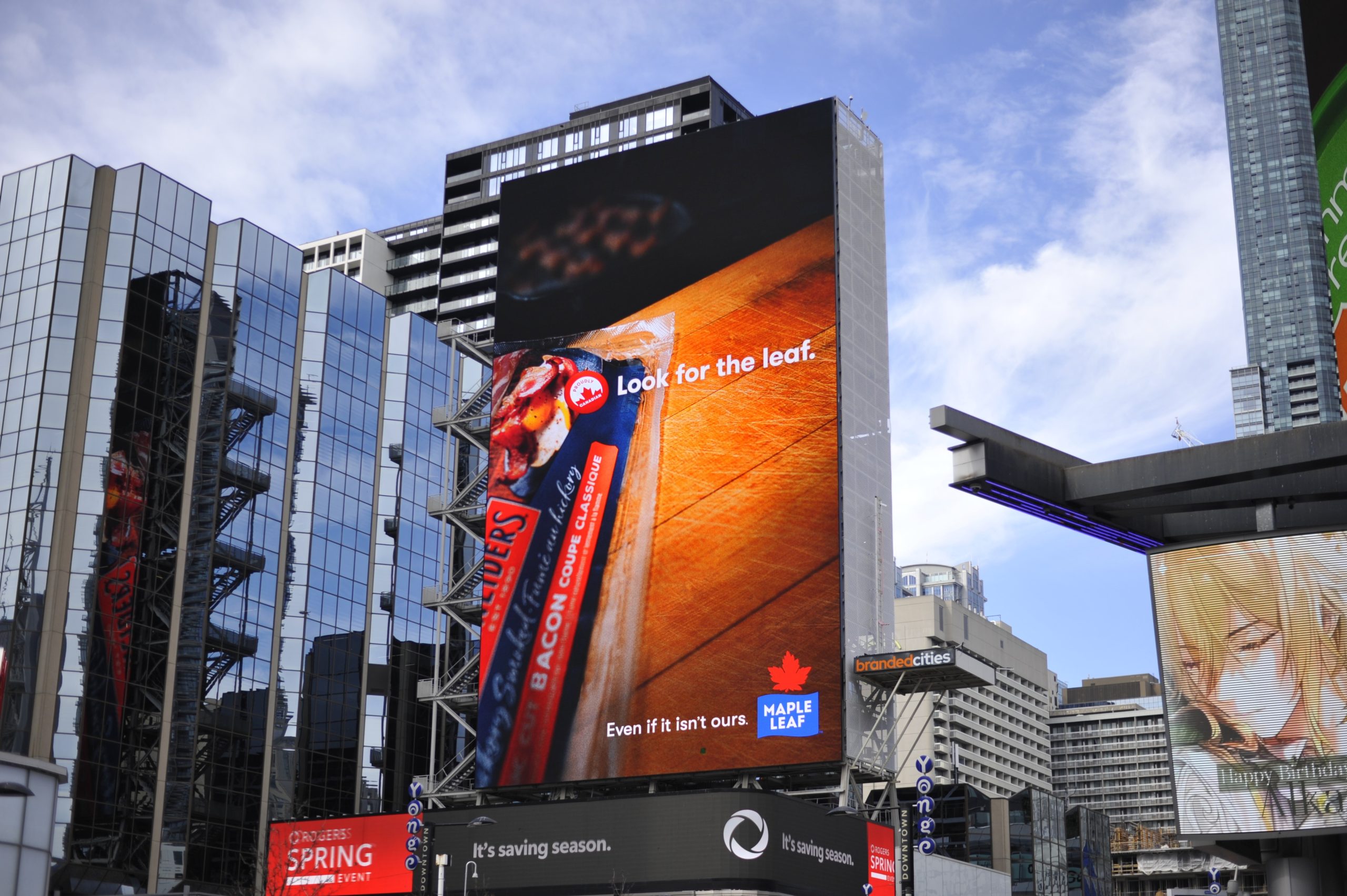 Maple Leaf Foods’ recent campaign takes an unconventional approach, promoting a dozen external brands that would normally be considered competitors as a way to help consumers looking to buy Canadian products. By doing so, the company aimed to stand out in a saturated market with the “Made in Canada” message.
Maple Leaf Foods’ recent campaign takes an unconventional approach, promoting a dozen external brands that would normally be considered competitors as a way to help consumers looking to buy Canadian products. By doing so, the company aimed to stand out in a saturated market with the “Made in Canada” message.
Developed in partnership with No Fixed Address, the “Look For The Leaf” campaign leveraged Maple Leaf’s media channels to showcase Canadian brands like Kawartha Dairy, Neal Brothers and High Liner Foods. More than 15 brands joined the initiative, with an additional 30 signing up for a new microsite, which showcases Canadian-made products and explains the campaign’s purpose. According to Maple Leaf, the list of companies was selected with the aim of strengthening the Canadian economy.
Fuse handled media strategy, which included homepage takeovers and dominations across select Canadian news media, key social channels and high traffic site specific DOOH executions. The agency says the campaign, launched last month, collected 26.3 million digital impressions, 5.2 million DOOH impressions and more than 146,000 site clicks. TikTok stood out with a 3.23% CTR, driving the highest engagement. News media channels also performed well, with CTRs ranging from 0.10% to 0.27%, exceeding the industry benchmark of 0.08 to 0.10%.
Luke Moore, VP and managing director of media at Fuse, tells MiC the media mix deviated from Maple Leaf’s typical approach. Instead of the usual focus on TV, online video, targeted social media and consumer media, this campaign adopted a mass-market approach, targeting a broad audience of English- and French-speaking adult grocery shoppers. Typically, Moore says the brand’s campaigns are more “nuanced and refined.”

“The client was looking for a national campaign in both languages that included big executions that were unorthodox for Maple Leaf Foods. The intent was to generate high volumes of buzz and to align with ‘Canadian’ wherever possible,” he says. “The challenge was to leverage a ‘Made in Canada’ message that broke through a now cluttered marketplace, and to make serious impact quickly in manner that highlighted Maple Leaf Foods unique position in Canada.”
Moore explains that given the campaign’s 48-hour duration, the media strategy took the form of a national media blitz to achieve rapid reach. While DOOH had the smallest percentage allocation, it was strategically concentrated to dominate one location per day. News media channels received the largest budget share, with social networks closely following in terms of allocation.
“We were treating this like a large-scale sale event within the traditional framework and what better environment than the Canadian news publishers,” he says, adding that social dominations provided very high levels of quick reach and the DOOH dominations allowed for social sharing and earned media amplification.
“We have helped spark buzz and demand amongst more Canadian brands during this unique time we find ourselves in- to the point that new brands are interested in partnering and we have begun to planning stages II and III,” Moore says.


















